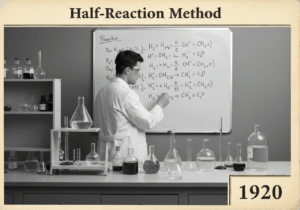A recognized tool (formula in fact) used to assess the risk of low back injury associated with manual lifting tasks.
- Metodologie: Ingegneria, Qualità
Equazione di sollevamento NIOSH

Equazione di sollevamento NIOSH
- Miglioramento continuo, Ergonomia, Fattori umani, Ingegneria dei fattori umani (HFE), Produzione snella, Miglioramento dei processi, Analisi del rischio, Gestione del rischio, Sicurezza
Obiettivo:
Come si usa:
- Calcola un limite di peso consigliato (RWL) e un indice di sollevamento (LI) in base a fattori quali la posizione orizzontale, la posizione verticale, la distanza di sollevamento, l'angolo di asimmetria, la frequenza di sollevamento e la qualità dell'accoppiamento. Un LI > 1,0 indica un rischio maggiore.
Professionisti
- Fornisce una valutazione quantitativa del rischio di sollevamento; aiuta a identificare i fattori di rischio specifici di un compito di sollevamento; è ampiamente accettato e utilizzato per riprogettare i compiti di sollevamento.
Contro
- Si applica solo al sollevamento manuale a due mani; non tiene conto di tutti i fattori di rischio (ad esempio, capacità individuali, fattori ambientali); può essere complesso da applicare correttamente senza formazione.
Categorie:
- Ergonomia, Gestione del rischio
Ideale per:
- Valutazione del rischio di lesioni lombari associate a specifiche attività di sollevamento manuale.
IL NIOSH Lifting Equation (NLE) is particularly effective in environments where manual lifting is prevalent, such as warehouses, manufacturing plants, and medical settings. It is most commonly applied during the ergonomics phase of product design and workplace assessments, allowing engineers and safety specialists to collaborate on lifting task evaluations and modifications. Participants in the implementation of the NLE typically include safety engineers, ergonomists, occupational health professionals, human factors specialists, and employees who perform lifting tasks. The methodology can be integrated during various project phases, including the initial design development and during post-implementation reviews to ensure continuous improvement in ergonomics. A systematic approach using the equation can lead to redesigning jobs in a way that minimizes lifting risks and enhances worker safety. For instance, in an assembly line, modifying the positioning of components to align with the ideal lifting zones identified by the NLE can significantly lower the risk of injury. Industries like construction, logistics, and healthcare frequently utilize the NLE to analyze and adjust manual handling tasks. Furthermore, leveraging this methodology promotes a safety culture within organizations, encouraging ongoing risk assessments and fostering employee involvement in ergonomics initiatives, ultimately contributing to long-term injury reduction and enhanced operational efficiency.
Fasi chiave di questa metodologia
- Calculate the horizontal location (H) of the load from the midpoint between the feet.
- Determine the vertical location (V) of the load from the floor to the handle of the load.
- Measure the lifting distance (D) as the vertical distance moved by the load.
- Assess the asymmetry angle (A), which is the angle of the lift relative to the midline of the body.
- Estimate the lifting frequency (F) by the number of lifts per minute.
- Evaluate coupling quality (C) based on the type of grip used on the load.
- Use the above parameters to calculate the Recommended Weight Limit (RWL) using the NIOSH lifting equation.
- Calculate the Lifting Index (LI) by dividing the load weight by the RWL.
- Interpret the LI value, identifying the associated risk of low back injury.
Suggerimenti per i professionisti
- Regularly update the parameters based on ergonomic research to adapt the NIOSH equation to evolving workplace conditions.
- Incorporate technology such as motion capture systems to measure actual lifting techniques, improving the accuracy of RWL calculations.
- Utilize the findings from lifting assessments to implement training programs focused on safe lifting practices, reinforcing risk mitigation strategies.
Leggere e confrontare diverse metodologie, raccomandiamo il
> Ampio archivio di metodologie <
insieme ad altre 400 metodologie.
I vostri commenti su questa metodologia o ulteriori informazioni sono benvenuti su sezione commenti qui sotto ↓ , così come tutte le idee o i link relativi all'ingegneria.
Contesto storico
1920
1924
1926
1927
1927
1930
1940
1920
1922
1925
1926
1927
1930
1938
1947
(se la data non è nota o non è rilevante, ad esempio "meccanica dei fluidi", viene fornita una stima approssimativa della sua notevole comparsa)















Post correlati
Calcolatore da METS a calorie
Meta-analisi
Mappatura dei messaggi
Diagrammi del modello mentale
Forze di spinta e di trazione massime accettabili
Pianificazione dei fabbisogni di materiale (MRP)